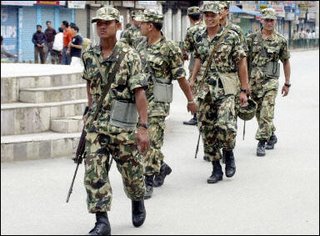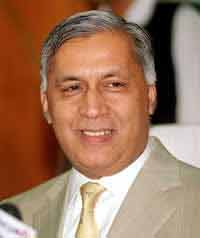The News
May 29, 2006
Nadeem Hussain
Microfinance in Pakistan is literally taking its first baby steps. With less than 12 % penetration of a potential market of six million households, the current outreach is dominated by government programmes like the National Rural Support Programme and Khushali Bank, which is a public private partnership. Unfortunately, these institutions are currently financially unsustainable as they are not empowered to charge a market rate which would allow them to make a profit. The five specialised microfinance banks have yet to make an impact as either they are less than a year old and hence have yet to reach scale, or their risk appetite has precluded them from reaching scale.
So clearly, the window of opportunity for enterprising commercial banks to enter this segment of the market is wide open. Examples also exist in the region as scaling down by commercial banks into the microfinance segment has successfully been demonstrated in countries in Asia such as India, Bangladesh and Indonesia.
Commercial banks in Pakistan are currently enjoying very high profits. As a result many of them may be in a position to consider a pilot programme for the microfinance segment. However, the mainstream banks continue to shy away from this sector, which has a potentially high social impact and is financially sustainable, because of some preconceived notions. There are many myths connected to this sector. At the heart of this prejudice is the misplaced belief that it is unprofitable, and hence the view that microfinance must always remain a charitable enterprise. This is followed by the notion that given the low incomes of potential borrowers and their lack of traditional collateral, the loan loss rate must be very high. Lastly, it is expected that this customer base, given its low level of literacy must be averse to technology, hence average transaction cost cannot be brought down for sustainability.
Let us examine each myth and determine what the reality is. The first myth is that this must be a charitable activity since the customer can never be profitable given the small size of the loan, the cost incurred in acquiring and maintaining this customer, and lastly the expected loan loss experience. Yet, worldwide experience suggests that, if handled correctly, not only is this customer base profitable it can be the most profitable and sustainable segment in a commercial bank’s portfolio. Successful commercial banks have demonstrated ROA (return on assets) in the range of 9-15 per cent in South Asia, let alone Latin America, where it is even higher.
In the microfinance business model, the revenue, in order of priority, is driven by scale, interest rate and size of loan. While the principal cost determinants are the cost of funds and the cost of intermediation, i.e. acquiring and administrating the loan portfolio. The last driver for profitability is the credit loss. Achieving scale is the key as the average loan is usually small given for a maximum for twelve months with monthly repayments. The acquisition model must have two key components. Firstly, the microfinance acquisition team must be compensated on a variable basis, i.e. a reasonable fixed component and an increasing variable component based on performance. Secondly, acquisition must be localised. Unlike consumer product acquisition, which is usually from a centralised location, microfinance branches or sales and service centres must be located where the customer is. This is necessary because unlike other segments relationship managers must be more aware of their customer’s monthly cash flows and the potential difficulties they may face. As the branch rental in low-income areas is low compared to the more commercialised parts of a city, the number of branches does not cause an unsustainable expense burden. Once these two components are in place, scale can be achieved without crippling fixed costs and more than expected credit loss.
An effective interest rate is the next most important revenue driver. Successful commercial banks charge a rate which not only covers their fully loaded costs but also provides the necessary expected return from their investments. The trap to avoid is that charging a sustainable interest rate may be viewed as usurious, thereby generating negative press and impacting the brand of the commercial bank.
Three principal facts should be kept in mind. First, this is a commercial venture, hence the effective rate must be sustainable. Second, the target customer base typically borrows from the informal sector, where the interest rates are usually a multiple of whatever the effective rate the commercial banks come up with. Third, the target customers are more than willing to pay the effective rate, as becoming part of the formal credit world allows them to create a credit history which facilitates repeat loans of a higher value.
The last important revenue driver is the size of the loan. While loans can start as low as Rs10,000, the average loan size must be higher in order to be sustainable. The current average loan in Pakistan is $170 which is only 45 per cent of the per capita income. Successful commercial banks have much higher loan sizes.
On the cost side, the funding costs are a key issue for specialised commercial banks. However, given that the current cost of funds for commercial banks in Pakistan is less than two per cent, this is not a major issue. The cost of intermediation, i.e. branches, staff and systems can be a major hurdle. And if commercial banks used their current model of distribution they would not be successful. The microfinance customer base requires a completely different mindset regarding management, products and distribution.
The last myth is that of the perceived loan loss. The perception is that as one goes lower down the income chain the quality of the loan portfolio, and thereby the loan loss, increases. In the case of microfinance this assumption does not hold true. The reality is that this customer base greatly values its introduction to formal lending providers. The global experience suggests that unless the customer base repayment is assessed correctly the write-off is less than one per cent.
Hence, in order to succeed four elements are critical: First, the sales force compensation must be a low-cost-variable model. The sales force must also be trained to become income assessors as opposed to purely sales staff. Second, the distribution channel must consist of low-cost branches in non-prime locations where the customer base resides. Technology must be leveraged to reduce maintenance cost .For example, the introduction of biometric, voice-aided, touch-screen ATMs reduces the need for multiple tellers, given the high-volume low-value savings transactions. Third, back-office operations need to be minimised, particularly paper based transactions. Fourth, the product offered must be simple, easy to purchase and must satisfying basic needs.
There are three basic models available to commercial banks to access this market. One is that they can first use the existing management, infrastructure and branches in order to leverage the existing costs. Unfortunately, this usually does not work as a totally different mindset is required. Another model is that a totally separate subsidiary can be created. This model has been successfully used. Although it initially leads to increased cost the long-term returns more than compensate for this initial investment. A third model is that commercial banks can use the existing microfinance players to originate and service loans for them. Commercial banks provide the use for their balance sheet and low-cost funding. The originators are paid a service fee and the credit risk is split between the two.
The reality of the dynamics of the microfinance market suggests that there is a significant opportunity for commercial banks out there. Profits and social dividends will only accrue to those who are willing to seize it.
The writer is CEO of Tameer Microfinance Bank. Email: nadeem.hussain@tameerbank.com























